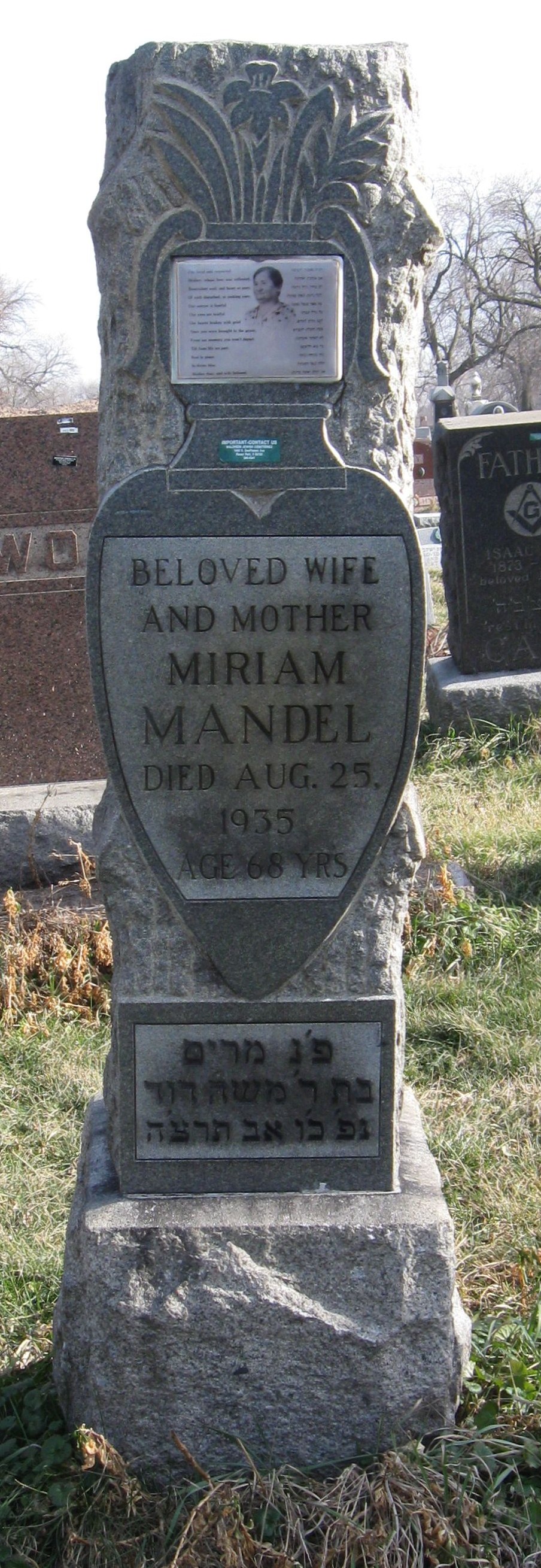Last December I told the story of Katherine Craig Stewart who died of the Spanish Influenza, We will never know the exact number of people who died in 1918 from the flu itself or complications from the flu but we do know that the virus did not discriminate. Most of its victims were young, but it didn't matter whether they were rich or poor, black or white. Several members of the same family would get sick, and some would recover while others died. All flu deaths were tragic, but especially painful were the ones where the departed was an only child. This is the story of one of those: Wesley Gillette Dempster.
In Unit One ("The Old Section") of the Mausoleum at Rosehill Cemetery is the John G. Shedd Chapel - a large open room with a podium at the front. The chapel is dedicated to the memory of John Graves Shedd whose family interment room opens into the chapel. The chapel, used for committal services in years gone by, is lined with family rooms.
In the back of the chapel, facing the Shedd room, is a family room labelled "DEMPSTER".
While not as large or elaborate as the Shedd room, it is lined with white marble and is impressive in its own way.
The second from the top in the lineup of Dempster crypts on the south wall is simply labelled "Wesley Gillette Dempster 1900-1918". Those two lines etched into the white marble don't begin to tell of the heartache that money, breeding and social position could not stop.
SON OF CHAS. W. DEMPSTER DIES AT SCHOOL IN AZ
Wesley Gillette Dempster, the 18 year old son of Mr. & Mrs. Charles Wesley Dempster of 1318 Astor Street, died Monday of pneumonia at Mesa, Ariz., where he was attending school. The body will arrive this morning, and funeral services will be held at Rosehill mausoleum tomorrow.
Wesley had made application to enter an officers' training school in California and had expected to report for duty there on Dec. 1.
The father has lived in Chicago since 1882. He is an investment broker with offices in the First National Bank Building and is Vice President of the Rosehill Cemetery Company.
Chicago Daily Tribune - November 22, 1918
Unlike Katherine Craig Stewart who was ill for fifteen days. Wesley Dempster was only ill for seven.
DEMPSTER - Wesley Gillette Dempster, 18 years of age, only son of Charles Wesley and Mary Gillette Dempster. Nov. 18, at Mesa, Ariz., of pneumonia. Services at Rosehill mausoleum Saturday at 3 o'clock. Friends kindly omit flowers.
Chicago Daily Tribune - November 23, 1918
How many dreams were crushed, how many hopes were dashed, how many lives were changed by the death of one young man? By the deaths of the countless thousands who were victims of the Spanish Influenza? We will soon look under another stone at another victim.
May the soul of Wesley Gillette Dempster and the souls of his grieving parents, rest in peace.




















